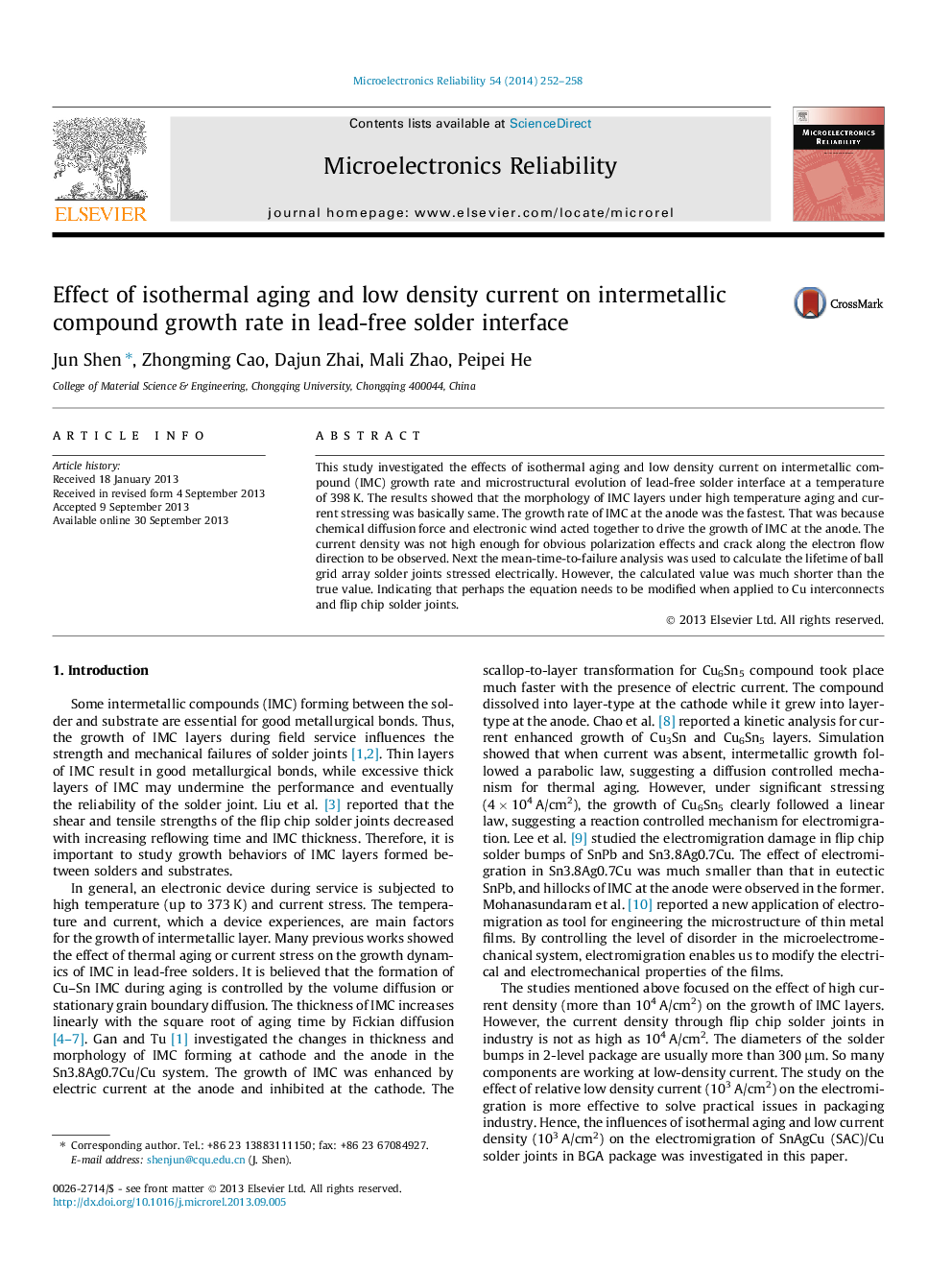| Article ID | Journal | Published Year | Pages | File Type |
|---|---|---|---|---|
| 544982 | Microelectronics Reliability | 2014 | 7 Pages |
•The thickness of IMC at the cathode increased with aging time.•The thickness of IMC at anode sides grew faster, compared with no-current case.•The equation needs to be modified in case of low current density stress.
This study investigated the effects of isothermal aging and low density current on intermetallic compound (IMC) growth rate and microstructural evolution of lead-free solder interface at a temperature of 398 K. The results showed that the morphology of IMC layers under high temperature aging and current stressing was basically same. The growth rate of IMC at the anode was the fastest. That was because chemical diffusion force and electronic wind acted together to drive the growth of IMC at the anode. The current density was not high enough for obvious polarization effects and crack along the electron flow direction to be observed. Next the mean-time-to-failure analysis was used to calculate the lifetime of ball grid array solder joints stressed electrically. However, the calculated value was much shorter than the true value. Indicating that perhaps the equation needs to be modified when applied to Cu interconnects and flip chip solder joints.
